After you have signed the contract with the building company, it might take some months before there is any “movement at the station”, as they say in old Aussie novels. Your land needs to be titled before any construction can begin. That alone can take many months, while the developer sells all the blocks and builds streets and other amenities such as plumbing, internet wiring and electricity.
The builder has your deposit and isn’t just sitting on it. You get into their internal project calendar. They have a finite number of building supervisors, who could have between 8 and 20 homes at various stages of construction. Sometimes more. The supervisor will contact you when your site is to be cleared. Thereafter, you are contacted at important milestones in the project.
Site Clearing
Clearing a site applies mainly to land that has been just allocated for housing and has been titled. Although you might have seen a level patch of land when you bought it, once construction begins, it could resemble a war zone. People will deposit their building debris and household rubbish on your land and it is your responsibility to clear it. It cost me $500 for my own builder to do so. The temporary fencing you see in this picture had a phone number and I got the renting company to retrieve it. They said they had not rented it to anyone in this vicinity, so it shows that some builders dump rubbish quite some distance from their site.

Some people put up a fence to reduce such illegal dumping, but that isn’t foolproof. City councils also require the owner to keep the grass (or weeds) cut, else you might get fined. We found out the hard way at an earlier property.
Slab or Base Stage
These days, a concrete foundation is commonly used with steel-frame houses. Concrete is poured into an Expanded Polystyrene (EPS) waffle raft slab.
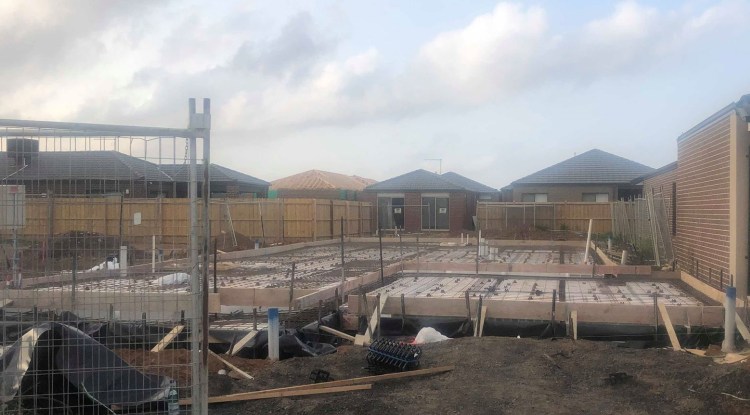
The house “floats” on this concrete slab, rather than be anchored into the soil, or else uneven heaving can crack the slab and damage the house. Reactive soils such as clay require careful selection of the correct raft slab.
Peak body: Expanded Polystyrene Australia
Frame Stage
Once the concrete slab has cured, the electricity connection is installed, so that the tradies can operate their tools. Then the partly assembled frame is delivered and assembled.

The frame can be assembled in 2-3 days, depending on the number of available tradespeople.
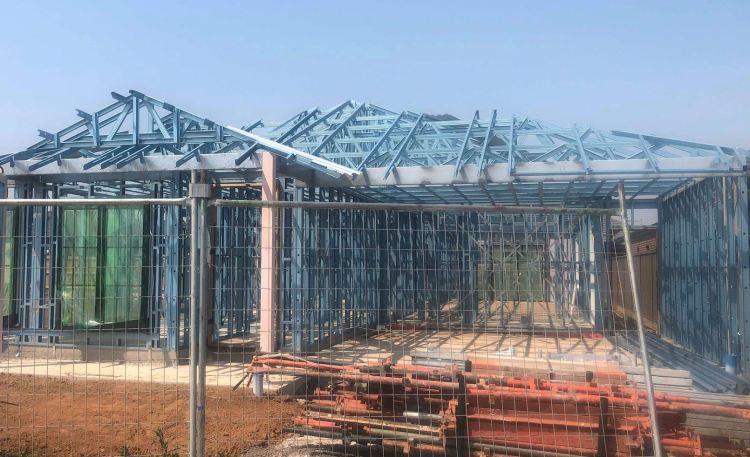
Lockup Stage
For the next few weeks you can sneak into your house (at your own risk) after hours to see the construction in progress. Other people might also check out your build to get ideas for their home. There is always the risk of theft, so unless security cameras are installed, the builder has to wear the risk.
The walls and external insulation are in place, but not painted. The kitchen benchtop is not installed, but the bricks are delivered and waiting to be added.
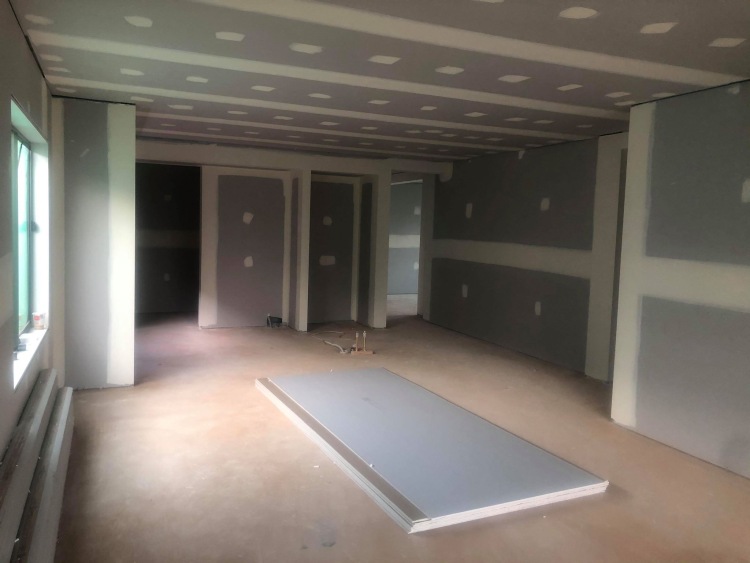
The interior is substantially completed when the front door is installed and locked after hours. This is a temporary door, not yours, as it has a key that is common to all the others being built at the same time. Your own door will be installed at the last minute so as not to risk damaging it.
Brickwork Stage
As the name implies, the external brick walls are erected. They might have some stray mortar on them that will get washed off later in the project.
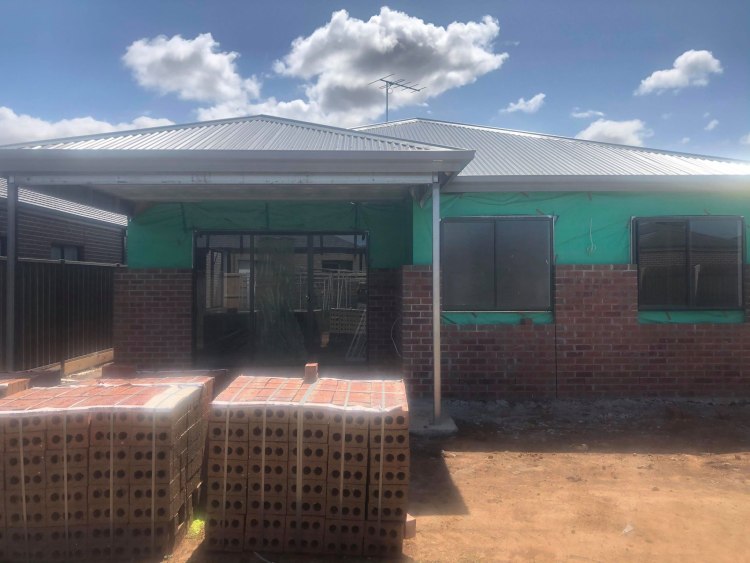
Fixing Stage
The fix-to-final stage is one of the final stages prior to completion. The floor and wall tiles are laid. Bathroom vanities and sinks are installed. The NBN connection usually gets installed. Cabinets and cupboards are built, but the oven is one of the last items to be connected. Floor boards are laid. Blinds are fitted, which helps to stop opportunity thieves from peering in. The driveway is constructed, if part of the house contract. From the outside, the house seems to be “completed”.
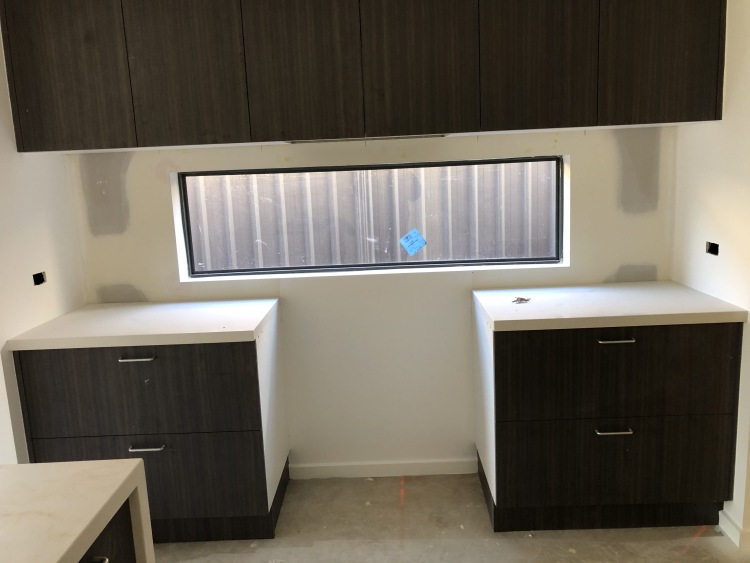
Electricals Stage
Although the wiring was installed after the frame was ready and before the walls were built, the sockets for electrical connections, lights and data/TV cables are now fitted.

I was given a chance to test all the outlets at this point, which helped to identify one mis-wired Ethernet outlet where one wire was out of sequence. None of the TV outlets were connected to the antenna, so it paid for me to take a small TV and cable with me. All power sockets were tested with a special LED tester.
Practical Completion Inspection (PCI)
You get a chance to check the workmanship on this day. You are given a roll of blue tape where you can point out blemishes and nicks in the paintwork and cabinetry. You can also engage an independent building inspector to do this step. It cost me $600 for that service.
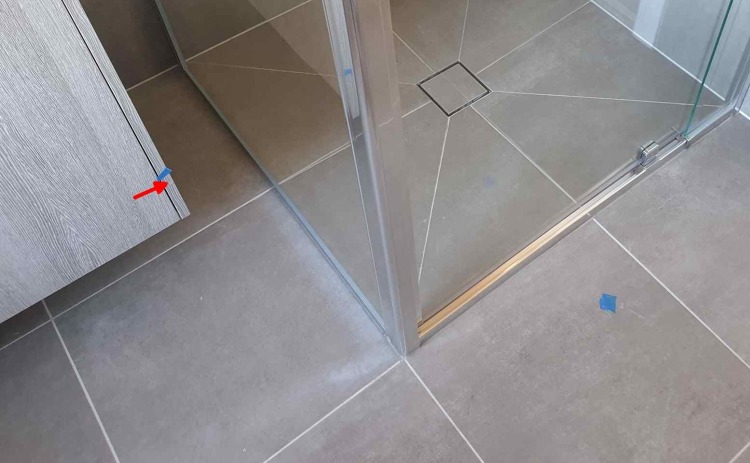
Handover
On the handover day you get the keys to the house. You check that all the blemishes have been fixed and sign the completion of the contract document. You also arrange to move in on this day, as the place might get burgled after all the valuable appliances are installed. Hence you will have purchased your home and contents insurance and set it to begin on this day .
Unfortunately, as we found, some defects are found after you move in. There were no holes in the laundry cabinetry for the washing machine and the supervisor tried to say that this is the responsibility of the home owner! We had extensive photos of the display home, so that point was quickly settled.
Fencing
Unless fencing was part of your construction contract, you have to contact all your neighbours (we have seven) and get their agreement to build a timber or steel fence of your choice, or some compromise. Two neighbours had contacted me prior to our build, so we started with a mismatch before we moved in. Fences prevent other builders from crossing your property with their equipment, so it’s best to erect them as early as possible.
Concreting
Usually, minimal concreting is provided with the house – your front and rear entrances and the driveway are typical inclusions. The rest is up to you. We wanted to widen the crossover, as most homes have a single entrance at the street level that fans into two spaces in the garage. This is inconvenient for one driver. The council issues permits for widening the crossover and there might be another larger fee if a tree needs to be removed.
Landscaping
Landscaping can be expensive, depending on your design. You can have a lawn, crushed rock, pebbles, shrubs, trees and anything else you fancy.